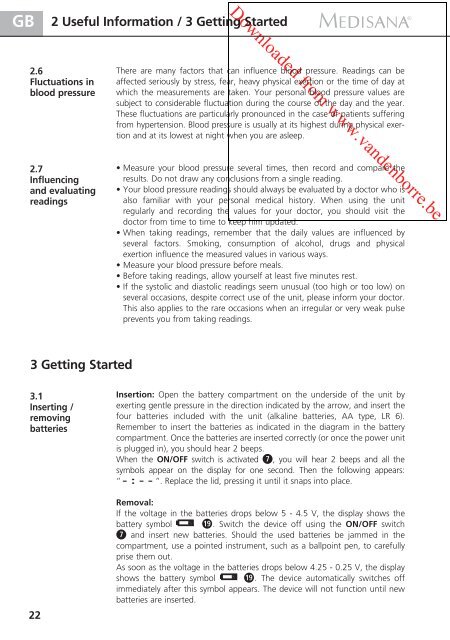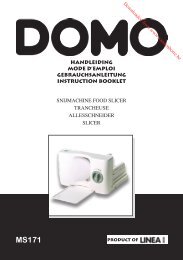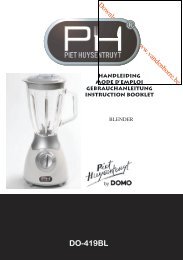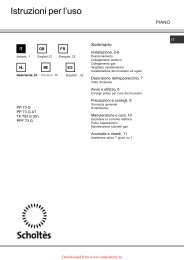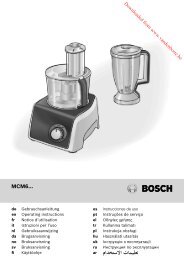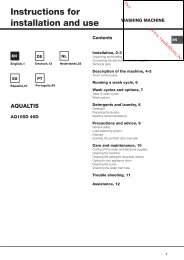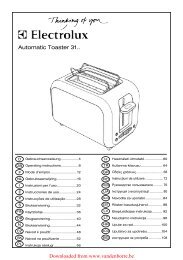PT - Vanden Borre
PT - Vanden Borre
PT - Vanden Borre
Create successful ePaper yourself
Turn your PDF publications into a flip-book with our unique Google optimized e-Paper software.
GB<br />
22<br />
2 Useful Information / 3 Getting Started<br />
2.6<br />
Fluctuations in<br />
blood pressure<br />
2.7<br />
Influencing<br />
and evaluating<br />
readings<br />
3 Getting Started<br />
3.1<br />
Inserting /<br />
removing<br />
batteries<br />
Downloaded from www.vandenborre.be<br />
There are many factors that can influence blood pressure. Readings can be<br />
affected seriously by stress, fear, heavy physical exertion or the time of day at<br />
which the measurements are taken. Your personal blood pressure values are<br />
subject to considerable fluctuation during the course of the day and the year.<br />
These fluctuations are particularly pronounced in the case of patients suffering<br />
from hypertension. Blood pressure is usually at its highest during physical exertion<br />
and at its lowest at night when you are asleep.<br />
• Measure your blood pressure several times, then record and compare the<br />
results. Do not draw any conclusions from a single reading.<br />
• Your blood pressure readings should always be evaluated by a doctor who is<br />
also familiar with your personal medical history. When using the unit<br />
regularly and recording the values for your doctor, you should visit the<br />
doctor from time to time to keep him updated.<br />
• When taking readings, remember that the daily values are influenced by<br />
several factors. Smoking, consumption of alcohol, drugs and physical<br />
exertion influence the measured values in various ways.<br />
• Measure your blood pressure before meals.<br />
• Before taking readings, allow yourself at least five minutes rest.<br />
• If the systolic and diastolic readings seem unusual (too high or too low) on<br />
several occasions, despite correct use of the unit, please inform your doctor.<br />
This also applies to the rare occasions when an irregular or very weak pulse<br />
prevents you from taking readings.<br />
Insertion: Open the battery compartment on the underside of the unit by<br />
exerting gentle pressure in the direction indicated by the arrow, and insert the<br />
four batteries included with the unit (alkaline batteries, AA type, LR 6).<br />
Remember to insert the batteries as indicated in the diagram in the battery<br />
compartment. Once the batteries are inserted correctly (or once the power unit<br />
is plugged in), you should hear 2 beeps.<br />
When the ON/OFF switch is activated , you will hear 2 beeps and all the<br />
symbols appear on the display for one second. Then the following appears:<br />
“- : - - “. Replace the lid, pressing it until it snaps into place.<br />
Removal:<br />
If the voltage in the batteries drops below 5 - 4.5 V, the display shows the<br />
battery symbol . Switch the device off using the ON/OFF switch<br />
and insert new batteries. Should the used batteries be jammed in the<br />
compartment, use a pointed instrument, such as a ballpoint pen, to carefully<br />
prise them out.<br />
As soon as the voltage in the batteries drops below 4.25 - 0.25 V, the display<br />
shows the battery symbol . The device automatically switches off<br />
immediately after this symbol appears. The device will not function until new<br />
batteries are inserted.


